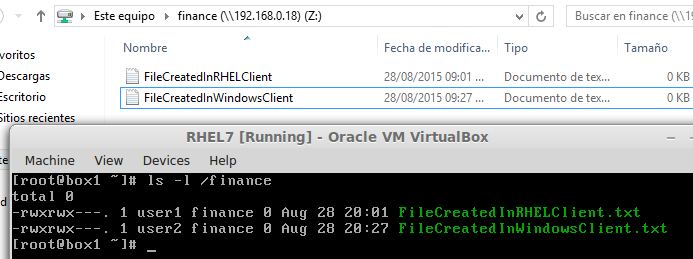

- CONNECTING TO A SAMBA SHARE FROM WINDOWS HOW TO
- CONNECTING TO A SAMBA SHARE FROM WINDOWS CODE
- CONNECTING TO A SAMBA SHARE FROM WINDOWS PASSWORD
This addresses the problem but has the disadvantage of possibly enabling all local system users to write to the share after it is mounted: //10.211.55.4/Shared /mnt/samba cifs credentials=/root/smbcredentials,noperm 0 0 Making an entry for a guest-permitted Samba share When this option is selected, the client, in this case, our local system, do not run permission checks on the Samba share since permissions are enforced only by the server side. Assuming that the uid and main gid of the user who should be permitted to write to the shared directory are both 100, we would write: //10.211.55.4/Shared /mnt/samba cifs credentials=/root/smbcredentials,uid=100,gid=1000 0 0Īnother alternative is to use the noperm cifs option. How do we address this issue? Setting the value of these selections to the uid and gid of the local user who should be permitted to write on the share is one approach (it goes without saying that writing should be permitted in the share config on the server with the read-only option set to “no”). The default value for these parameters is 0, which corresponds to the root user’s uid and gid.

When the Samba server does not offer ownership information, the uid and gid mount options are used to set the uid and gid of the files in the shared directory on the client system. Why is this? If you list the directory contents and investigate the directory permissions, you will notice that the root user only holds them due to the uid and gid cifs mount settings. If we try to build, alter, or do away with a file inside the share as an unprivileged user, we get an error message. However, we can only read the content of the directory. The Samba share must be mounted on “/mnt/samba” after we run the command above.
CONNECTING TO A SAMBA SHARE FROM WINDOWS CODE
Once we save the item in the fstab file, we can simply run the following line of code to ensure that the Samba share is appropriately mounted. Now that we have the file, let’s edit our fstab entry: //10.211.55.4/Shared /mnt/samba cifs credentials=/root/smbcredentials 0 0 It has authorizations set to 550, so only the root can access it and list its contents. However, this may be unnecessary because the file is in the /root directory owned by the root user and the root group by default. 10.211.55.4/Shared /mnt/samba cifs username=tuts,password=0456 0 0Īfter we save the file, we can change its permissions so that it is only readable by its owner. Here’s how our fstab entry would look: sudo -s
CONNECTING TO A SAMBA SHARE FROM WINDOWS PASSWORD
The first and less secure method is to set the Samba share’s username and password as values of the special cifs mount options in the /etc/fstab file. We can give credentials without interaction in two methods, one significantly more “secure” than the other.

We don’t want those credentials to be requested interactively since we need to automount the Samba share at startup. In most circumstances, Samba shares are password-protected, and access to them requires a login and password.
CONNECTING TO A SAMBA SHARE FROM WINDOWS HOW TO
How to create a password-protected Samba share entry to /etc/fstab This element influences the mount settings we must use in /etc/fstab. A Samba share can be protected by username/password credentials or available as a guest user, depending on how it is configured on the server. The /etc/fstab file on any Linux system includes the instructions for mounting filesystems during startup.


 0 kommentar(er)
0 kommentar(er)
